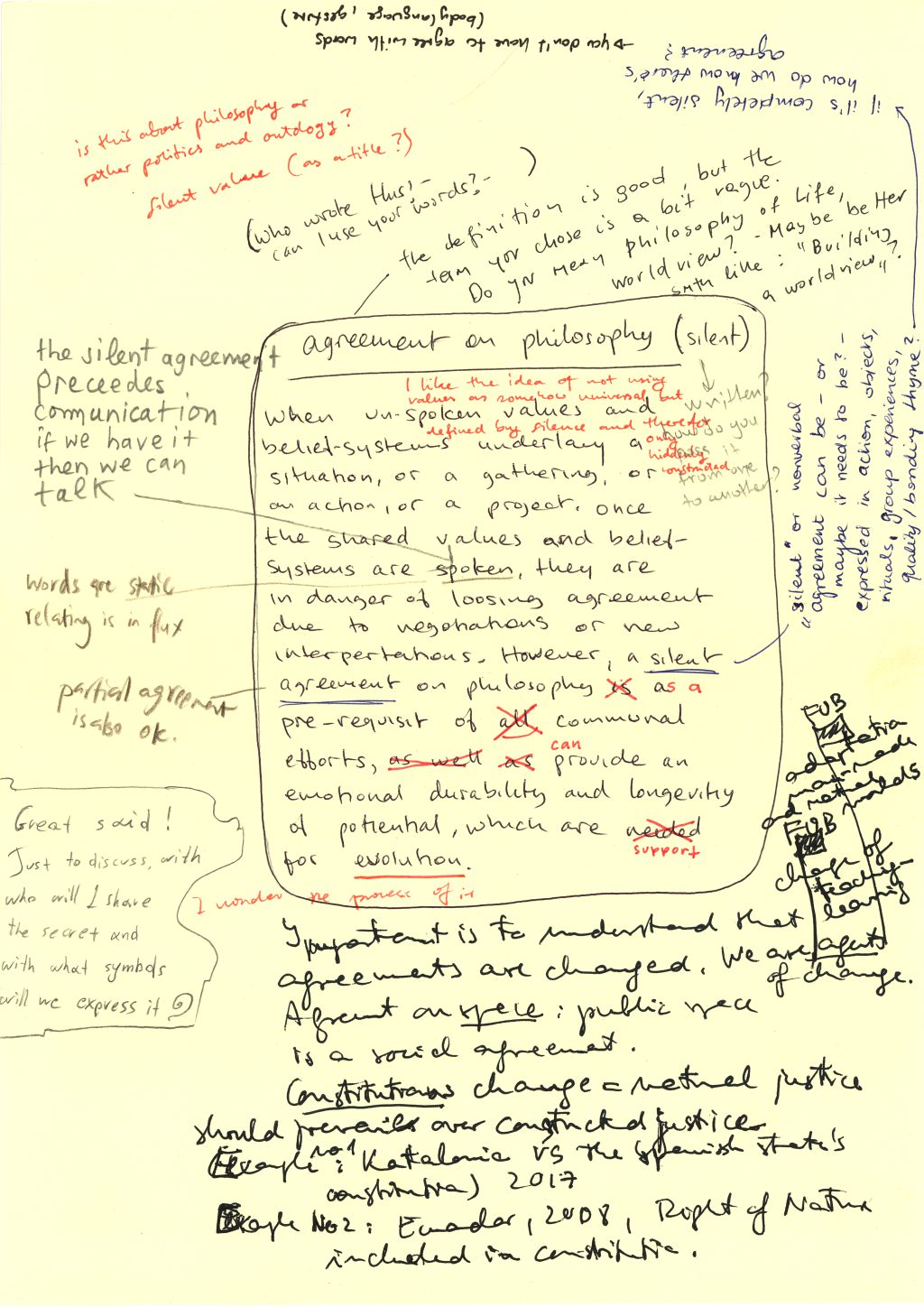Lexicon
Silent Conversation is a methodology aimed at manifesting terminological thinking. A public process which does not only describe elements of practice, but also embodies the values of the project – the Silent Conversation methodology facilitates horizontal, experimental, inclusive writing, thinking and ideation. Since 2018, the methodology has evolved and been adapted by different practitioners to fit critical explorations in several university and workshop settings. Through these developments, Silent Conversation has become a broad, easily applicable artistic methodology for thinking together, for becoming otherwise, for group-instituting.
In a Silent Conversation session a group sits together in a circle, in silence, while each participant writes a list of terms or ideas on her paper. Then the papers are passed to the left, and each participant comments on the list they have received from their neighbor. The passing of the papers to the left continues until all of the lists have been commented on, and each participant has their own paper back in their hands. Then a second round starts by writing a more in-depth text, a term definition, or a flashed-out idea, and a second round of commenting takes place. By the end of the session, each participant has written their own term, and has contributed to all other terms written in the group. In this way, many parallel discussions take place in the silent group. All voices get heard on the page, playing with the notions of authorship, the linearity of language, hierarchy of knowledge, and plain discursiveness. A Silent Conversation is a very intense conversation at the end of which, despite no words having been spoken, many ideas have been expressed.
The terms and definitions from the Silent Conversations offer a language of practice and capture the physical process of reflection. As terms and comments are written or sketched on each page, a network of thoughts is being collectively formulated. When you look at a page, you can see different relationships emerge between the central writing and the comments in a way that challenges the knowledge hierarchy. In some pages the first written text stands out clearly, in the middle or the top, while comments, highlights, sketches appear around it. In other pages it is hard to make out the original text from the comments that followed. On each page, the process of feedback, reflection, and conversation is made visual, and captures a raw, unfinished, imperfect process of communication. At the the heart of the Silent Conversation is a methodology that does not produce a product, but frames a process, thus coining new terms, but never truly finalizing their definitions.




